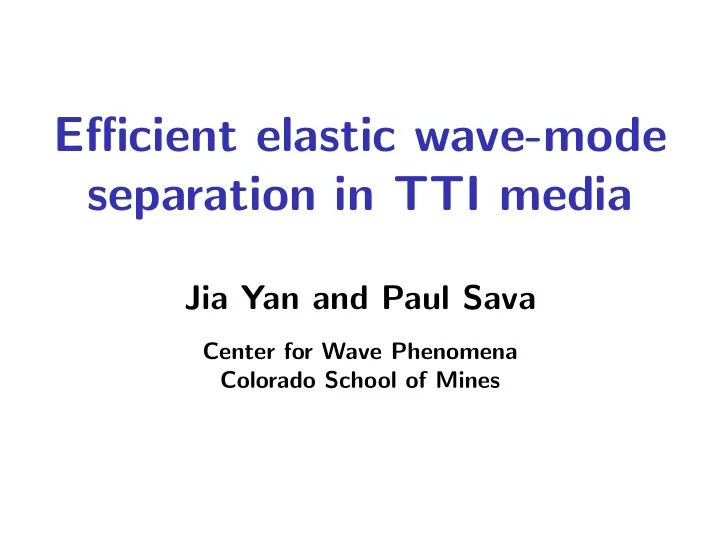

Efficient elastic wave-mode separation in TTI media Jia Yan and Paul Sava Center for Wave Phenomena Colorado School of Mines
elastic imaging anisotropic heterogeneous 3D
W z
P
SV
SH
Helmholtz decomposition W = ∇ θ + ∇ × ψ
Helmholtz decomposition W = ∇ θ + ∇ × ψ P = ∇ · W S = ∇ × W
Isotropic wave-mode separation x-domain: stationary filtering � P = ∇ · W = D c [ W c ] c c = { x , y , z } : Cartesian coordinates
Isotropic wave-mode separation k-domain: vector projection � P = i k · � � i k c � W = W c c c = { x , y , z } : Cartesian coordinates
Anisotropic wave-mode separation k-domain: vector projection � qP = i u · � � i u c � W = W c c Dellinger and Etgen (1990)
Anisotropic wave-mode separation x-domain: non-stationary filtering � qP = ∇ a · W = L c [ W c ] c Yan and Sava (2009)
Wave-mode separation x-domain k-domain heterogeneous model homogeneous model expensive cheap
Efficient wave-mode separation step 1: separate in k-domain P r ( x ) = F − 1 � � i u r ( k ) · � W ( k ) r : reference models
Efficient wave-mode separation step 2: interpolate in x-domain � w r ( x ) P r ( x ) P ( x ) = r r : reference models
Multidimensional interpolation 1 w r = � m − m r � m = { ǫ, δ, ν, α }
V P
ǫ
δ
ν
W z
ISO
VTI
TTI
Conclusions ◮ wave-mode separation is applicable in 3D ◮ k-domain separation is cheap ◮ accuracy controlled by reference selection
Acknowledgments the sponsors of the Center for Wave Phenomena at Colorado School of Mines
Recommend
More recommend